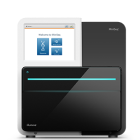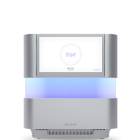Applications of NGS
NGS methods and applications
The discovery power of NGS provides untapped insights into biological phenomena, pathways, and systems across a broad spectrum of research areas

What is NGS used for?
NGS is used to sequence vast amounts of genetic material, enabling researchers to take a broad, unbiased approach to scientific research in a variety of applications and biological systems.
Rather than profiling select markers, you can identify variants across thousands of regions, down to single-base resolution, in a single experiment. NGS expands the scope of your experimental studies to help find the answers to your boldest research questions.
Using NGS in key research areas
NGS can play an important role in pursuing the answer to a variety of biological questions using a wide array of published methods for diverse sample types. NGS enables the unbiased investigation of multiple biological “omes”, such as the proteome, transcriptome, epigenome, and genome. A combinatorial approach interrogating multiple omes at once, called multiomics, can also be achieved with NGS.
Popular NGS methods and applications include:
Cancer research
NGS is used to bulk-sequence tumors and identify genetic mutations in tumors, aiding in the development of targeted therapies and monitoring cancer progression through liquid biopsies.
Cancer Research Methods Guide
The Cancer Research Methods Guide is a 40+ page resource with simple workflows for a broad range of cancer research applications. This guide includes single-cell sequencing, spatial sequencing, methylation profiling, multiomics, cell-free RNA sequencing, and more.
Liquid Biopsy Methods Guide
This 20+ page eBook provides published, comprehensive workflows for thorough characterization of liquid biopsy samples using NGS and microarrays. Overviews of liquid biopsy analytes, research examples, diagrams, and more.
Microbiology and infectious diseases
NGS helps in pathogen identification, outbreak tracking, and studying antimicrobial resistance by sequencing the genomes of bacteria, viruses, and other microbes.
Methods Guide for Microbial Whole-Genome Sequencing
Sequence hundreds of organisms simultaneously, generate accurate reference genomes, and perform comparative genomic studies.
Genetic and rare diseases
NGS enables rapid sequencing of genomes or exomes to identify novel SNPs associated with rare diseases.

Further reading: New to NGS eBook
This 20+ page eBook is a comprehensive, yet easy-to-follow guide all about NGS methods and applications, workflows, data analysis solutions, and a step-by-step guide to getting started with NGS.
Download eBookKey NGS applications in various fields
| Applications | Areas of interest/fields | Recommended instruments |
|---|---|---|
| Gene expression profiling Examines gene expression of the subset of coding regions in the genome. |
|
Small and medium benchtop instruments |
| Microbial genomics Discover novel microbes, monitor outbreaks, analyze food sources, and more. |
|
Small and medium benchtop instruments |
| Targeted gene sequencing A useful tool for analyzing specific variants in a given sample. |
|
Small and medium benchtop instruments |
| Small RNA sequencing A technique to detect and sequence small RNA species such as microRNAs. |
|
Small and medium benchtop instruments |
| Enriched genome Used for analyzing specific genetic variants in a given sample. |
|
Small and medium benchtop instruments |
| Transcriptomics (bulk, single cell, spatial) The complete profiling of the transcriptome, including all RNA molecules found within individual cells or tissue, in bulk, or at spatial resolution. |
|
Small and medium benchtop instruments |
| Immune repertoire (bulk and single cell) Used to identify unique receptor variants found in individuals susceptible to autoimmune disorders and other diseases. |
|
Small and medium benchtop instruments |
NGS Workflow Finder
Take the guesswork out of your next workflow. The NGS Workflow Finder provides personalized solution recommendations and resources so you can sequence with confidence.
Find your NGS workflow today
Empowering access for groundbreaking genomic discoveries
Illumina benchtop sequencing systems are making NGS technology more accessible to laboratories worldwide. Learn how these systems provide the speed, power, and flexibility to make breakthroughs in microbiology, cancer research, and more. The MiSeq i100 Series or NextSeq 1000 and NextSeq 2000 Systems can help make your NGS research goals within reach.
Download eBookNGS applications and methods by instrument
Key application
Supported application
*Small targeted panels < 50 genes, Large targeted panels > 50 genes |
||||
| Method |
|
|
|
|
|---|---|---|---|---|
| Small whole-genome sequencing (microbe, virus) Sequence the entire genome of a bacterium, virus, or other microbe. |
||||
| Targeted DNA sequencing Targeted gene sequencing panels are useful tools for analyzing specific mutations in a given sample. |
Key application with small targeted panels* |
Key application with small targeted panels* |
Key application with small targeted panels* |
Key application with small targeted panels* |
| mRNA sequencing Sensitive, accurate measurement of gene expression, after mRNA enrichment using poly-A capture. |
||||
| Total RNA sequencing Analyze coding plus multiple forms of noncoding RNA for a comprehensive picture of the transcriptome. |
||||
| 16s rRNA sequencing A culture-free method to identify and compare bacteria from complex microbiomes or environments that are difficult to study. |
||||
| Exome sequencing DNA technique analyzing coding regions of genes to identify genetic variants. |
||||
| Shotgun metagenomics Sequence thousands of organisms in parallel. Identify unculturable or low-abundance microbes, or evaluate microbial diversity. |
||||
| ATAC-Seq The assay for transposase-accessible chromatin with sequencing (ATAC-Seq) is a popular method for determining chromatin accessibility across the genome. |
||||
| Methylation sequencing Enhance epigenetic studies with high-coverage density and flexibility enabled by sequencing-based DNA methylation analysis. |
||||
| Targeted proteomics Analyzes specific proteins to understand their function and interaction in biological systems. |
||||
| Single-cell sequencing Discovery of distinct cellular niches that comprise a larger tissue. |
||||
| Spatial analysis Obtain a comprehensive map of transcriptional activity within tissue sections. |
||||
| Liquid biopsy research Examine cell-free circulating tumor DNA as a noninvasive cancer biomarker. |
||||
| Immune repertoire sequencing Decodes immune cell receptors to understand immune system diversity and response. |
||||
| Large whole-genome sequencing (human) Extensive sequencing of entire genome, revealing genetic information for research. |
||||
Related links
NGS technology
Discover the broad range of experiments you can perform with next-generation sequencing, and find out how Illumina NGS works.
Intro-to-NGS training courses
Our virtual courses provide an overview of NGS. You’ll learn about sequencing workflows, sample prep, data analysis, and more.
Whole-genome vs exome sequencing
Learn about the critical differences between whole-genome and whole-exome sequencing and when to use each method to efficiently make your next discoveries.
Planning NGS experiments
Learn about read length, coverage, quality scores, and other experimental considerations to help you plan your sequencing run.
Benchtop sequencers
Learn more about how Illumina benchtop sequencers are cost-efficient solutions for low and mid-throughput applications and for library quality control (QC) prior to large-scale studies.
16S rRNA sequencing on NextSeq 1000 and NextSeq 2000 Systems
This application note demonstrates comparable performance using the NextSeq 2000 and MiSeq Systems for sequencing the V3 and V4 variable regions of the 16S gene.
Small whole-genome sequencing on NextSeq 1000 and NextSeq 2000 Systems
This application note compares the performance of the NextSeq 1000 and NextSeq 2000 Systems to that of the MiSeq System for WGS. The NextSeq 1000 and NextSeq 2000 Systems are excellent choices for labs interested in WGS of small to medium-size genomes.
Want to discuss benchtop sequencing options?
Speak to sales today about choosing the right benchtop sequencer based on your needs.




